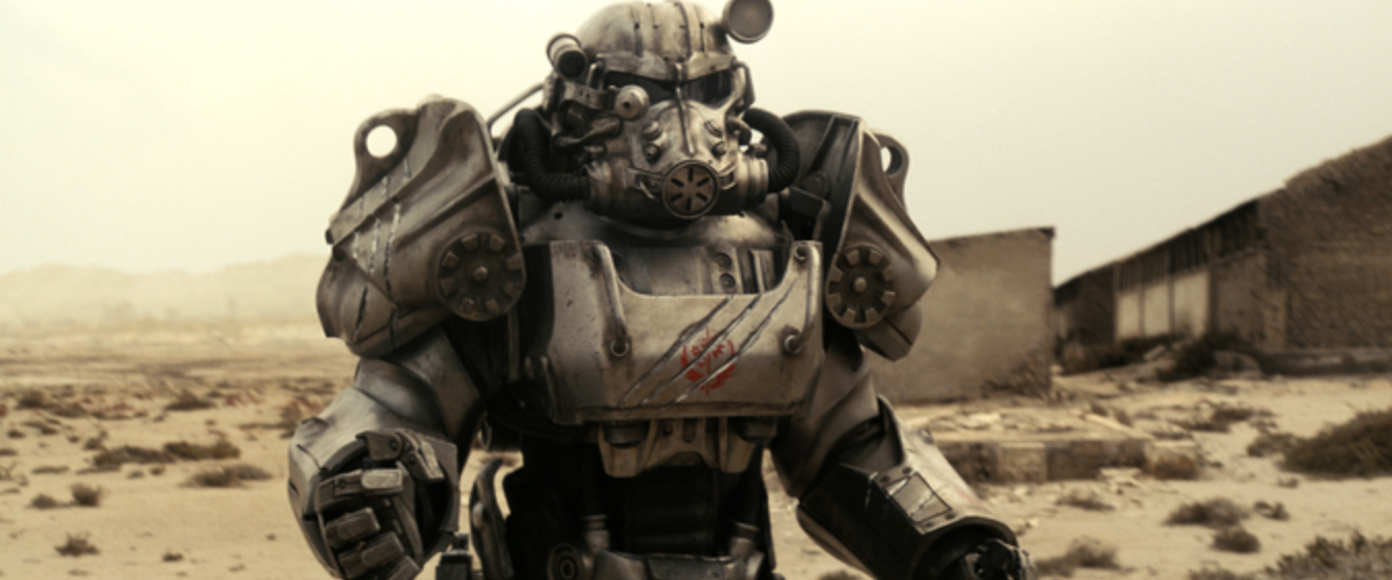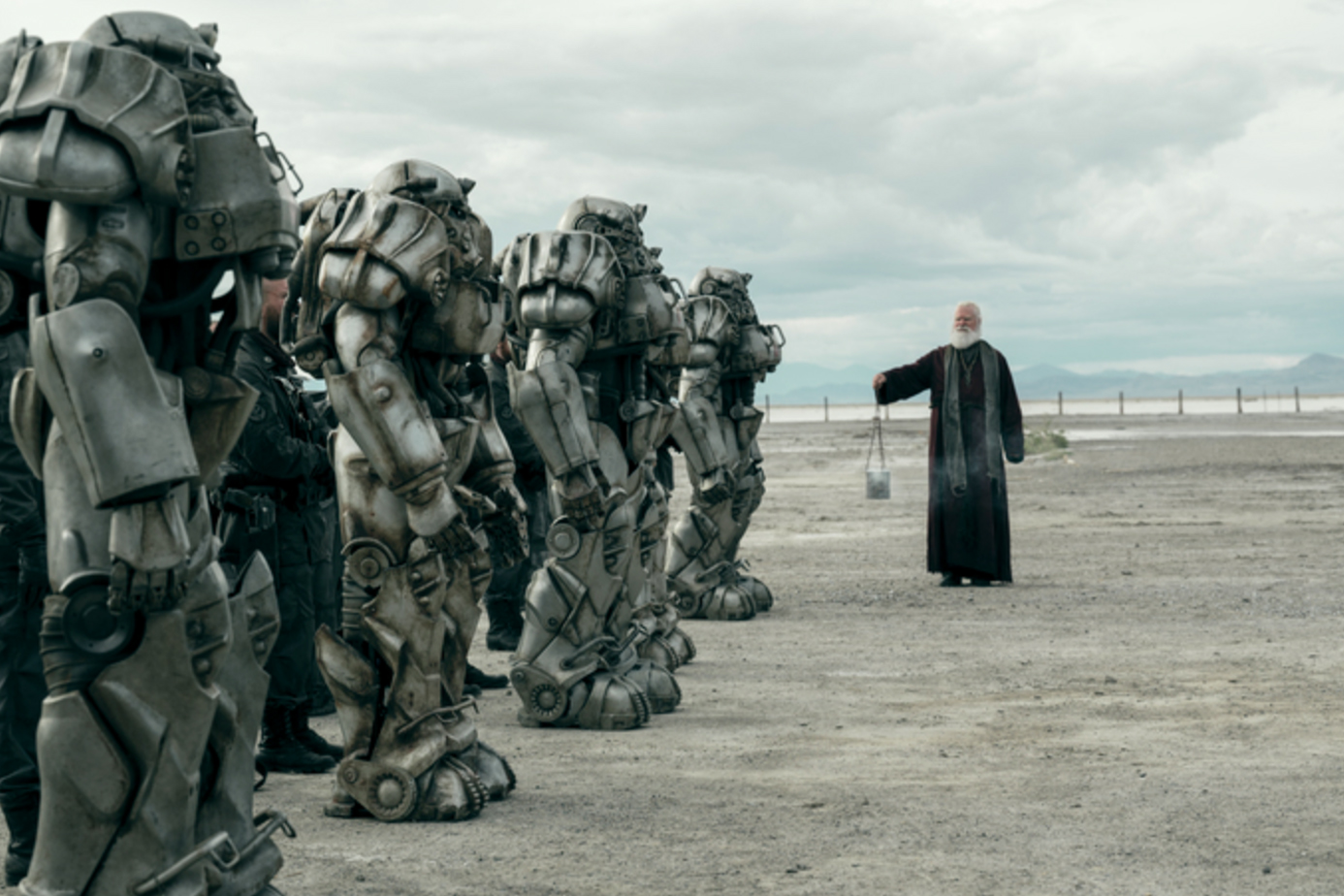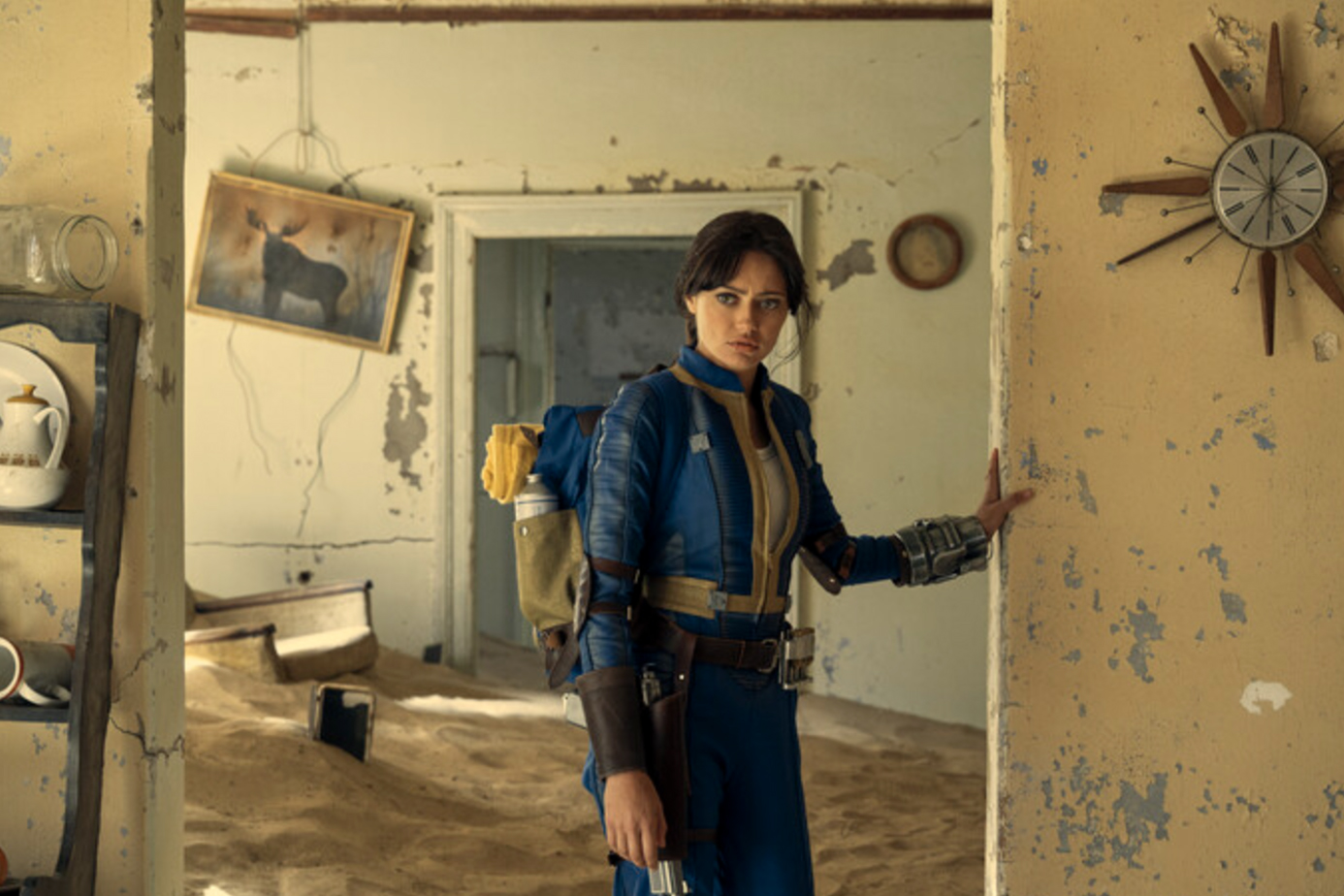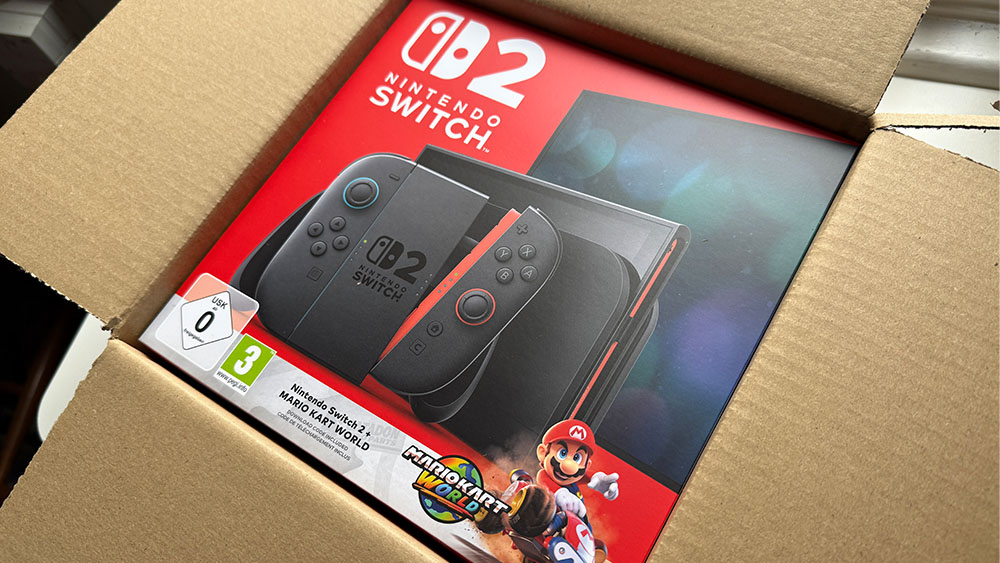
Amazon's Fallout TV show is out, you may even have binged the series and settled back to wonder, how did they make that show so good? Luckily I got to meet Fallout's costume designer Amy Westcott who shares some key insights into the thinking that went into designing show's look, and it's not all about Bethesda's video game. There are some unusual design influences in Fallout.
There's a moment in Amazon's Fallout TV series where a central character pinches their Vault-Tec suit and says, "it's a bit tight". What feels like a throwaway line is really a moment's insight into the complexity of ushering into real life game designs that work in an 3D engine like Unreal Engine, but in the cold light of day, on a film set, can be awkward.
It's the challenge Fallout's costume designer Amy Westcott embraced with open arms. Her gaming days ended with Tempest in the '80s, she tells me, laughing, but Amy was well aware of Fallout and its retro-futuristic visual design. After meeting with director Jonathan Nolan and showrunners Geneva Robertson-Dworet and Graham Wagner, the designer submerged herself in the original concept art behind the video game to eke out the "skeleton" of its aesthetic upon which she could "get creative".
Amy tells me, "Fallout has iconic looks to it and making them into something realistic that people wear was really fun, and also a challenge to make sure that we were very true to the game and its structure and its hierarchy and its look."

Fallout is famous for its 1950s retro-futurism that manages to combine the goofiness and colour of The Jetsons with the dour realism of a post-nuclear apocalypse where trash is valued and cannibalism barely raises an eyebrow. The show, like the game, is divided between the preserved life of the Vault dwellers and the Wasteland ruins; the before and after of a nuclear apocalypse.
"That that was the what was most interesting to me," reveals the costume designer, who explains how the look of Fallout comes from this notion of taking a design language that "makes sense" - the slim lines and glamour of 1950s fashion - and "throwing" to the wall, breaking it apart, and then "adding to it", which she says, "for me, that that brought a whole new level of creativity".
We weren't doing post apocalyptic depression and sadness, we were doing post apocalyptic life after
Amy Westcott
Amy considers the world of Fallout and its design for some time and says: "I think what's really unique and interesting about this project was that we weren't doing post apocalyptic depression and sadness, we were doing post apocalyptic life after, […] this is almost like flowers coming out of the ashes".
Get the Creative Bloq Newsletter
Daily design news, reviews, how-tos and more, as picked by the editors.
The challenge of depicting Fallout's wasteland to a designer like Amy is in creating costumes and a style that brings life to a dead place. She tells me these people haven't just survived in the ruins but have thrived, in their own unique and disturbing ways. They are proud of their style and how they present themselves.
Amy explains: "They weren't hiding from the world, this is a new world. That's all they know. This is where they were born. So it was really important for me to get that feeling of optimism."

Everything in Fallout is handmade, Amy tells me. It not only helps to draw out the "punk rock" feel of the show's approach to the Wasteland but ensures there's a physicality to the look.
While much will be made of the power armour being a real costume in Fallout, with three massive versions of the famous design made for the actors to inhabit and make use of, it's the smaller, handcrafted costume elements that catch the eye - armour made from trimmed, bent silver trays and helmets from hammered old colanders and strainers.
"This show was so practical, everything was real," Amy says enthusiastically. Care was taken to research the correct materials and the costume design team would seek out "junk" to turn into new designs for the show. "I had an amazing textile department that would beat everything within an inch of its life to get to this place of realism," she says.

While the 1950s influences are glaring, both in the flashbacks to the world before the nukes dropped and in the time capsule Vaults where life has remained steadfast and by the book, outside Amy says the design influences were far reaching. The "Sex Pistols in Britain, Vivienne Westwood and things like that for the wasteland" were big influences reveals Amy, while "The Brotherhood is very influenced by Harley Davidson".
With so much being handmade it is unsurprising to find Fallout's costume team made good use of modern technology too. I ask if 3D printers and laser cutters and engravers were used on the show to craft costumes. "Yes. All of it! We definitely combine the new technology with old," says Amy laughing excitedly. She reveals this new technology was teamed with the "old fashioned hammering process […] the old techniques that still work to make things realistic."
The blend of influences, styles and use of new technology and old techniques is something Amy says she will take away from working on Fallout. "The show taught me so much about thinking outside the box," she says. "It taught me to open up the horizons to the idea that anything is possible. […] With the right talent, the right team members, who brought it all to the table, I learned that anything is possible, anything can be made and the creative process is infinite."
Fallout releases on Amazon Prime Video on 11 April. You can read more about the series on the Fallout website. If you want to play the games read our guide to the best games console for the new machines out now. The best way to play is to buy an Xbox Series X and subscribe to Game Pass, all the Fallout games are free to play.

Thank you for reading 5 articles this month* Join now for unlimited access
Enjoy your first month for just £1 / $1 / €1
*Read 5 free articles per month without a subscription

Join now for unlimited access
Try first month for just £1 / $1 / €1

Ian Dean is Editor, Digital Arts & 3D at Creative Bloq, and the former editor of many leading magazines. These titles included ImagineFX, 3D World and video game titles Play and Official PlayStation Magazine. Ian launched Xbox magazine X360 and edited PlayStation World. For Creative Bloq, Ian combines his experiences to bring the latest news on digital art, VFX and video games and tech, and in his spare time he doodles in Procreate, ArtRage, and Rebelle while finding time to play Xbox and PS5.
